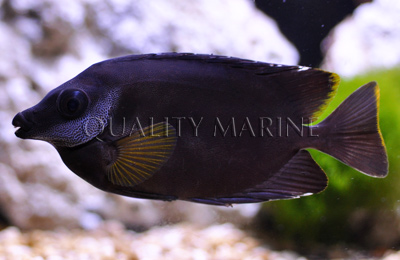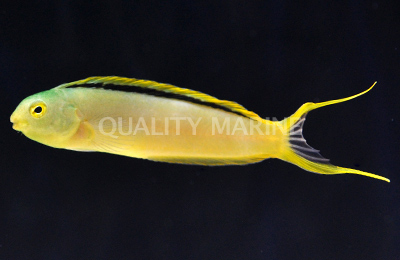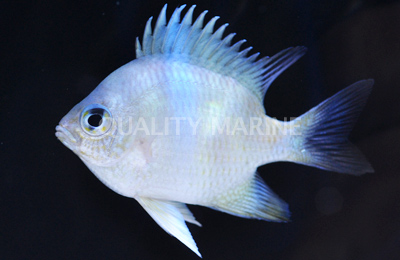Tongas Unique Marine Life

The islands of the Central Pacific can seem both foreign and familiar to those of us raised far away in North America. These are destinations ingrained in the public consciousness as realms of remote tropical isolation: Tahiti, Bora Bora, Fiji, Samoa, to name just a few. But while we may know that these lands exist, few of us know where they exist.
Take a moment and visualize this vast watery expanse. Now draw in your mind the island nation of Tonga. Where does it sit, and why is it there? What else is nearby? And, most importantly for this discussion, what fishes occur there? Its difficult without the aid of Google, right?
But these are worthy questions to answer, as Tonga is home to an especially fascinating reef fauna, full of endemic species that, again, are both foreign and familiar.
To understand the 170 or so islands of Tonga, we first need to look beneath the waves to the tectonic plates. Tonga sits on an undersea ridge that reaches down towards New Zealand, delimiting the boundary where the Pacific Plate has collided and subducted beneath the Australian Plate. Here we find the deepest oceanic trench in the Southern Hemisphere and what has been described as the most linear, fastest converging, and most seismically active subduction boundary on Earth.
Cool.
Anthropologically speaking, these islands have been grouped with nearby Samoa and everything that lies to the east in a vast and sparsely inhabited region known as Polynesia. But if we look at the marine life found here, a different picture is painted. There are certainly examples of species in Tonga with a broad distribution in the Central Pacific, but what we dont find are species limited to this anthropological concept of Polynesia. The endemic fishes of Tahiti and Rapa and Rarotonga dont manage to make it as far west as Tonga. A prime example of this can be seen with the Black Tang (Zebrasoma rostratum), a true Polynesian species, which has been reported from islands near to Tonga (e.g. Samoa, Neiu, Wallis & Futuna), but is seemingly absent from Tonga itself.
Instead, Tonga has a strange combination of species that reflects its unique position on the planet. In addition to those widespread Central Pacific fishes (good examples being the Flame Angelfish and Bartletts Anthias), it has many species in common with the West Pacific, essentially marking the ultimate boundary of where this fauna extends into the Pacific. Consider, for example, the ubiquitous Lyretail Anthias (Pseudanthias squamipinnis), which has a unique population in the West Pacific that extends from Japan to Bali to Tonga any further east and youll come across the closely related Polynesian endemic P. olivaceus.
Theres also a South Pacific element to Tongas coral reefs. Consider the illustrious Feminine Wrasse (Anampses femininus), which stretches from the subtropical shores of Australia all the way east to Easter Island, encompassing Tonga roughly in the middle. Some South Pacific groups are less cohesive, with separate western and eastern species. For these, Tonga again marks the edge of the western fauna, as it does with the rarely seen Half-banded Angelfish (Genicanthus semicinctus).
But arguably the most remarkable of Tongas reef life are those species found nowhere else. Through a convergence of this regions isolation and the breeding strategies in certain fish groups, a small number of endemic taxa have emerged here. These are often quite uncommon within the aquarium trade, but we at Quality Marine are fortunate to have a sustainable supplier that allows us the unique opportunity to offer this incredible biodiversity. So lets meet some of these fishes.

Black Foxface (Siganus niger)
Not every rare fish can win beauty contests. The sooty black of Siganus niger is a case in point. The vivid yellow body and contrasting black and white facial markings of the other foxface species are mostly absent here. The species group to which it belongs has a large range that includes the Eastern Indian Ocean (the Magnificent Foxface) and the West Pacific (the Foxface and One-spot Foxface). At neighboring Fiji, youll find the half-blackened Fiji Foxface, but its only in Tonga that we encounter the true Black Foxface. This is a group that has seen little study, so its hard to say why they speciated in this way and when, but, for aquarists, their care is identical.

Green Canary Blenny (Meiacanthus tongaensis)
One thing to keep in mind with Tongas endemic fishes is that they are characteristically part of larger species groups. We saw that with the Black Foxface, and we see a comparable example with the Green Canary Blenny. Meiacanthus tongaensis is part of the widespread and diverse M. atrodorsalis complex of fang blennies. Unlike the previous example, these fishes occur all the way west to Africa, where we find M. mossambicus. And, again, the closest relative here is found in neighboring Fiji, with the beautiful Canary Blenny (M. oualanensis). That fish is yellow and otherwise unmarked, while Tongas unique variant, M. tongaensis, is a bit more green on the head and features a dark stripe in the dorsal fin.
Barberi Clownfish (Amphiprion barberi) Barberi Clownfish (Amphiprion barberi)
This one is an interesting example of a fish that is only partially endemic to Tonga, at least in its current state. Clownfishes, similar to the fang blennies we just looked at, lay demersal eggs that hatch into short-lived pelagic juveniles. This relatively abbreviated life history in the open ocean means that populations are often stuck in place and can readily speciate. The Tomato Clownfishes illustrate this nicely, with unique species recognized in the Eastern Indian Ocean, around the Philippines, in Northwestern Australia, and other distinctive forms waiting to be described in parts of the West Pacific. One of the most recent additions to the genus was Fijis Amphiprion barberi, which stands out for its mostly orange body. But it also occurs at Tonga, albeit with a noticeable difference. The Tongan population is almost always much darker along its back, looking more like what we see in the widespread Cinnamon Clownfish (A. melanopus), but without the dark pelvic fins of that species. So are the Fijian and Tongan populations of A. barberi truly the same fish, or might those from Tonga be another endemic to these islands waiting to be discovered?

Tongan Blackfin Damselfish (Amblyglyphidodon melanopterus)
The tall body and saillike dorsal fin of Tongas Blackfin Damselfish are stately enough on their own, but, when combined with the contrasting black fins that develop in adulthood, this species can lay strong claim to being the island nations most beautiful endemic fish. Its a shame that damselfishes have such a negative connotation in the eyes of so many aquarists, as the Amblyglyphidodon genus is full of attractive and relatively well-behaved reef-safe species, perfect for medium-sized systems. The closest relative of this fish is found in (you guessed it) Fiji, the Orbicular Damselfish (A. orbicularis), which differs considerably in the colors of its fins, but is otherwise quite similar in appearance and morphology.
For the ultimate in a Tongan biotope aquarium, these four endemics are must-haves, perhaps mixed with examples of some of this regions other geographically diverse taxa. How about a Painted Anthias to represent the South Pacific, and a Multibar Angelfish accentuating the Central Pacific. There could be a species characteristic of the close relationship between Fiji and Tonga, like, say Nahackys Fairy Wrasse, and to round out this list how about the West Pacifics familiar Orange Spotted Goby. That would be a great tank.